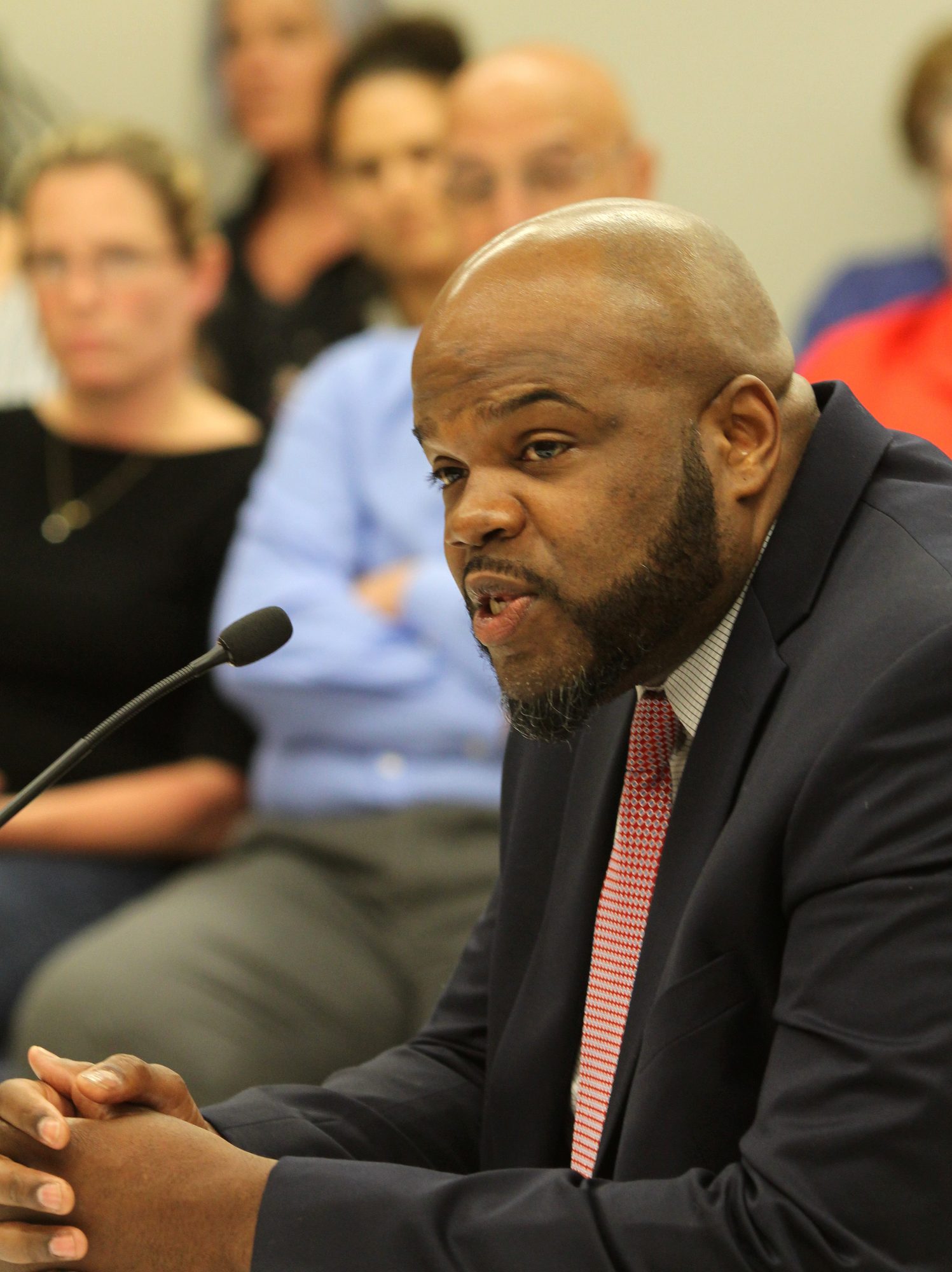LYNN — School officials are exploring strategies to bring more diversity into the staff at Lynn Public Schools to better reflect the student population.
In Lynn Public Schools, 87 percent of staff is white, 8 percent is Hispanic and less than 3 percent is black. But of the district’s students, 60 percent are Hispanic and 10 percent are black, according to data from the Department of Elementary and Secondary Education.
“There’s no question about the value of a teaching force that reflects the racial culture and linguistic diversity of our student body,” said Deputy Superintendent Dr. Patrick Tutwiler, the city’s next superintendent, at Thursday’s School Committee meeting. “It doesn’t matter what direction you look in, in terms of research, but the challenge in Lynn, in Massachusetts, nationally is around recruitment and retention.”
Tutwiler said Lynn’s data is not wildly disparate from the nine other commissioner’s districts or the 10 largest urban districts — Boston, Brockton, Fall River, Holyoke, Lawrence, Lowell, New Bedford, Springfield and Worcester. Of those districts, 6 out of 10 has a teaching force of 80 percent or higher that is white.
He said Boston is an outlier at 52 percent, but the district is under a long-standing racial quota court order.
“Everyone is struggling with this,” he said.
Tutwiler said the district is working out how to make staff more diverse, with representatives attending the local college fairs and the Massachusetts Educational Recruiting Consortium (MERC), which is the largest recruitment fair in the state, trying to recruit candidates of color.
There’s not a deep pool of candidates of color at the events, he said. The challenges, he said, is there is a gap with high school graduation rates, post-secondary graduation rates, gaps in students of color choosing education as a major, which leads to gaps in terms of who is entering the teaching force, and gaps in retention.
He suggested developing a strategic plan and exploring a pathway program, similar to some districts, who are partnering with institutions of higher education for teacher prep programs, and doing dual enrollment programs to prepare candidates of color for the teaching profession. He said the goal is to have those candidates come back to teach in those districts.
One of the major problems, Tutwiler said, is that Lynn Public Schools starts hiring in July, compared to Boston, which has the most diversity of the commissioner’s districts and starts in March.
“It’s too late in July,” he said. “They’re gone. They’re already hired.”
School Committee member Michael Satterwhite said it was important to show students the benefits of becoming a teacher.
“It’s a job that helps your community and you can help improve thousands of students’ lives and then in the end, you have a pension,” Satterwhite said. “It’s something you can live on.”
School Committee member John Ford said he sees salaries as a potential negative. In Lynn and Saugus the average salary is $73,000, and ahead of those districts in salary is nearby Swampscott, Revere, Salem and Peabody.
Young students are going to go where the money is, he said, adding that candidates may not want to come to Lynn where there are 80-year-old school buildings and large class sizes.
“It’s not just the availability of candidates,” Ford said. “We’re up against some real issues in our own community that we have to address.”
School Committee member Jared Nicholson said the goal is to have more Lynn students become teachers.
“When it comes to diversity, we’re in the unique situation where there is a supply problem for finding the right applicants and competition is heavy for qualified applicants, but we’re also the ones in charge of the supply,” Nicholson said. “We’re educating kids to enter into the workforce.”
“So we can understand those problems and also hold ourselves accountable to make sure that students who have that inkling of an interest in education, as a passion, as a career path, are having the connections made and we’re showing that opportunity to them.”

